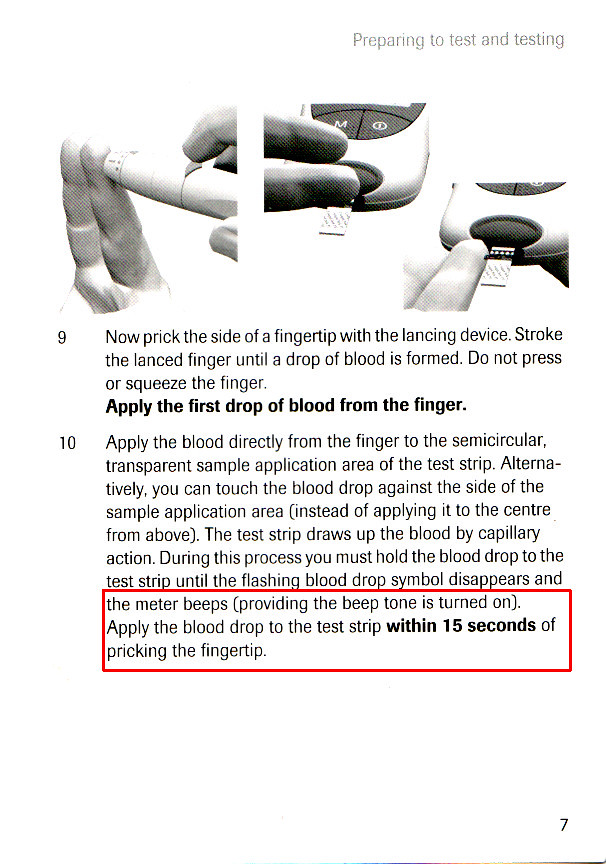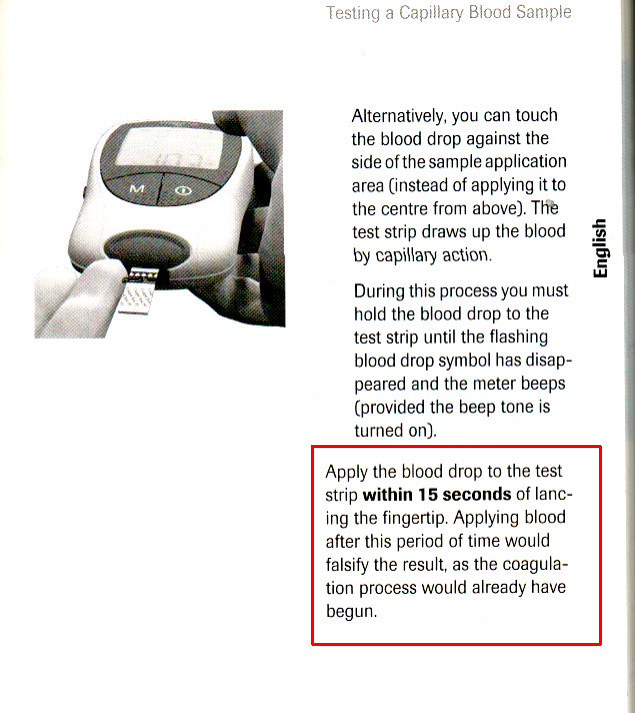I just posted some personal experience/instructions in another thread about the lancet size. I'll probably be repeating some of my suggestions here.
The reason that they want the drop applied within 15 seconds is that their test method requires the first drop of blood - which contains clotting factors that are in the skin when you incise it. Clotting usually starts within fifteen seconds of incision. Later drops are mixed with plasma and other fluids and these meters will provide an inaccurate result if you use them.
(FWIW -- the ProTime meters specifically instruct you to wipe off the first drop of blood. They don't WANT this first drop. They take a bit more blood than CoaguChek XS or InRatio, but may be more accurate because they don't have to factor in the stuff in that 'first drop.' ProTime isn't as easy to use, or as fast, as the other meters, but for those of us who have problems getting that first drop, the ProTime meters may be a good alternative).
When I'm testing with my InRatio, I also do a few of the suggested tricks. (Alere has a good downloadable manual that provides instructions for getting that first drop -- this information would be useful for either the CoaguChek or the InRatio meters and is probably worth downloading). I also don't take it for granted that a drop will form as soon as I incise my finger. I rinse my hand in warm water, I squeeze my knuckle below the fingertip so that a good quantity of blood pools in the tip, and I try to incise in the fleshy part of the fingertip. After incising, I often put pressure under the area of the incision, which usually helps to get the drop out.
(I use the InRatio nearly all the time -- but, after writing about the 15 second problem and prohibition against 'milking' the finger, my ProTime meter seems a bit more attractive than it was before I started writing this. Also -- although my login name is Protimenow, I have no financial interest and no relationship to the company that makes the ProTime meter or supplies or to any of its distributors - this is just a login name that I chose)





